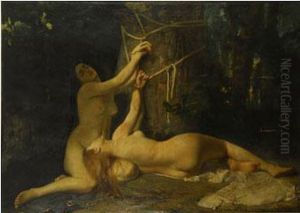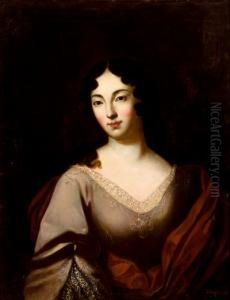Domingo Valdivieso Y Fernandez Henarejos Paintings
Domingo Valdivieso y Fernández Henarejos was a Spanish painter, born on February 12, 1830, in the city of Murcia, Spain. He is often recognized for his contributions to religious and historical painting, aligning with the art movement of his era that often focused on such themes. Valdivieso displayed a deep interest in art from an early age and pursued his passion by studying at the Real Academia de Bellas Artes de San Carlos in Valencia, where he honed his skills and developed his artistic language.
After completing his studies, Valdivieso traveled to Rome in 1858, which was a common practice for artists who wished to immerse themselves in the classical and Renaissance masters. His time in Italy proved to be significant as it allowed him to delve into historical and religious subjects, which he rendered with a combination of academic precision and romantic sensibility. His works from this period were heavily influenced by the Italian masters, and he began to gain recognition for his adept handling of these traditional subjects and his ability to infuse them with a certain emotional depth and realism.
Valdivieso's most notable works often depicted scenes from the Bible or the lives of saints, which were well-received in the context of the deeply Catholic Spain of the 19th century. His paintings were characterized by their meticulous detail, vibrant color palette, and the dramatic interplay of light and shadow, which added a sense of depth and movement to his compositions.
Despite his success, Domingo Valdivieso's life and career were cut short by tuberculosis, a common and often deadly disease of the era. He died on February 14, 1872, at the young age of 42 in Rome, where he had spent much of his professional life. Although his career was brief, his artistic legacy has been preserved in his works, which can be found in various collections, including those of Spanish museums and churches. Valdivieso remains an important figure in the history of Spanish art, representing the academic and religious traditions of the 19th century.

